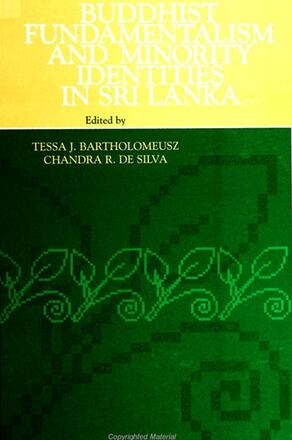
Buddhist Fundamentalism and Minority Identities in Sri Lanka
Alternative formats available from:
This examination of Sri Lanka's ethnic and religious minorities links the past with the present through a treatment of Sinhala-Buddhist fundamentalist development in the late nineteenth century and its hegemony in the late twentieth.
Description
Buddhist Fundamentalism and Minority Identities in Sri Lanka explores Sinhala-Buddhist fundamentalist ideology and its power to shape the identities of Sri Lanka's ethnic and religious minorities. Sinhala-Buddhist fundamentalists in contemporary Sri Lanka share an ideology that asserts a vital link between the island of Sri Lanka and the Sinhala people, especially in their role as curators of Buddhism, and often at the exclusion of the minorities. Minority responses to Sinhala-Buddhist fundamentalism are manifold, ranging from assimilation to the formation of rival fundamentalisms. The authors provide views of history markedly different from most scholarly reflections on Sri Lanka; thus, the history of shifting perceptions of Sinhala-Buddhist fundamentalism offered here constitutes an important contribution to the subaltern history of Sri Lanka. By treating both the development of Sinhala-Buddhist fundamentalism in the late nineteenth century and its hegemony in the late twentieth, this study links the present to the past.
Tessa J. Bartholomeusz is Associate Professor of Religion at Florida State University and has written Women under the Bo Tree: Buddhist Nuns in Sri Lanka. Chandra R. de Silva is Professor and Chair of the Department of History at Old Dominion University and has published several books, including Sri Lanka: A History.
Reviews
"It is a superlative collection of essays on an extremely important subject, one that will be of interest to readers from all sorts of disciplines: history, sociology, religious studies, and political science. The topic is significant from several perspectives: 1) it is arguably the single most important issue facing Sri Lanka today, and 2) it is the 'tip of the iceberg,' so to speak, of a phenomenon that is increasingly encountered both in the region and in the world at large, notably religio-ethnic communalism. This book will be a standard reference for years to come. " — Bruce Matthews, Acadia University